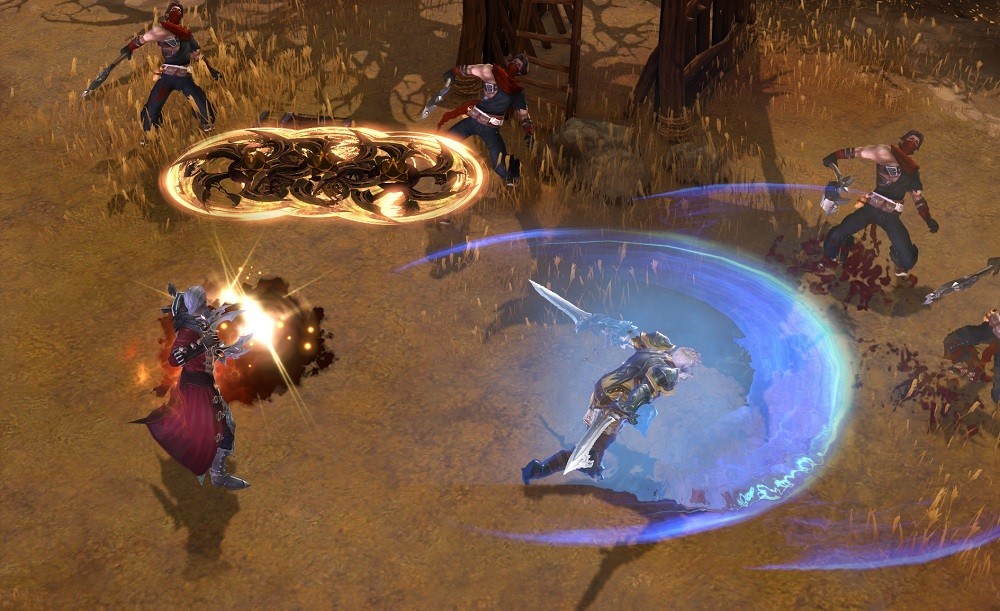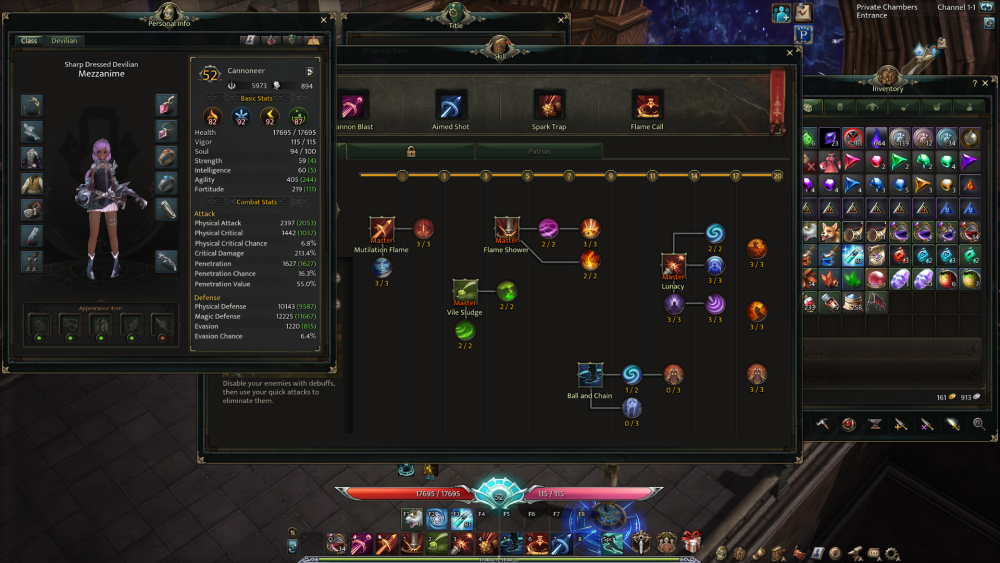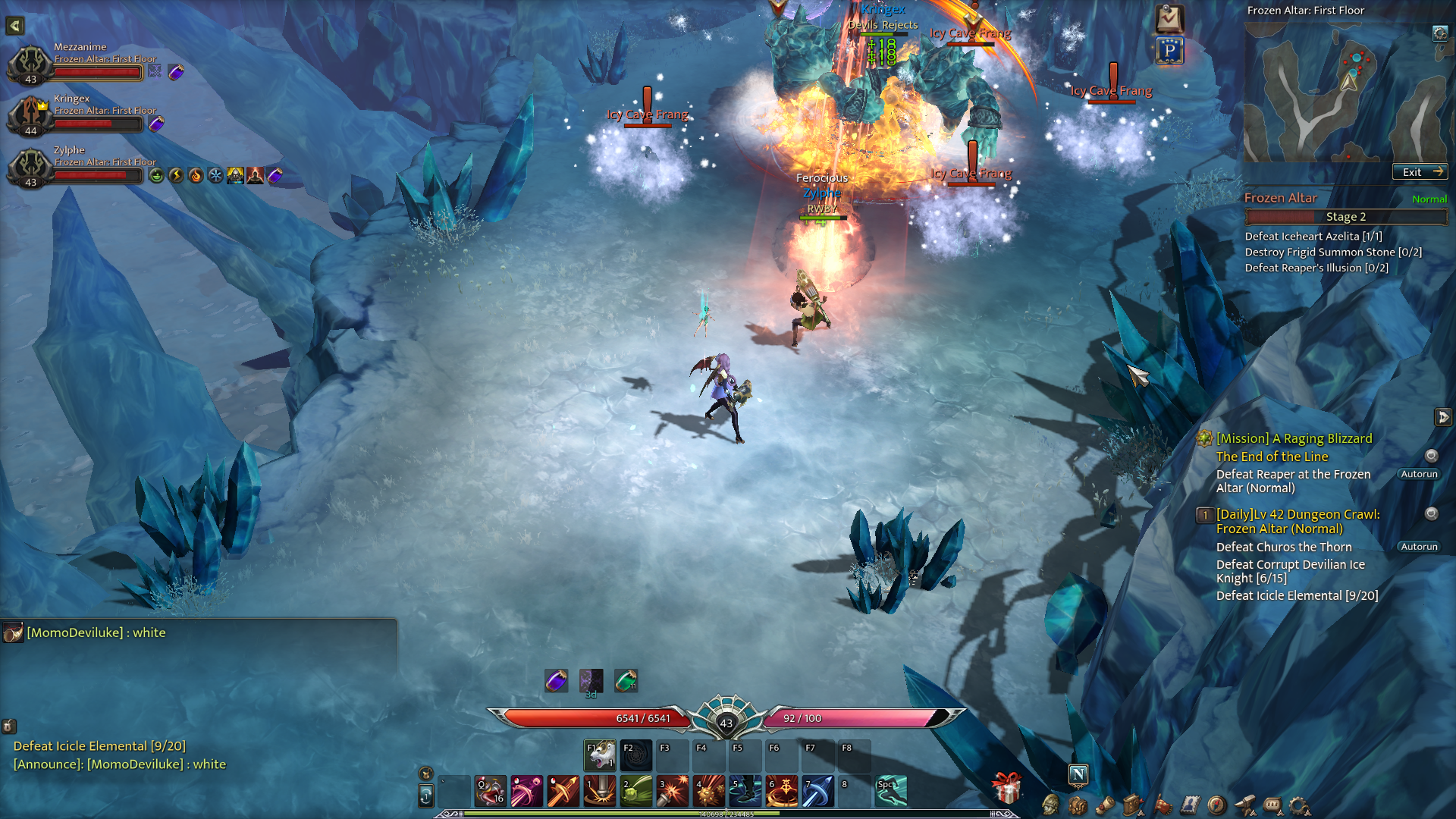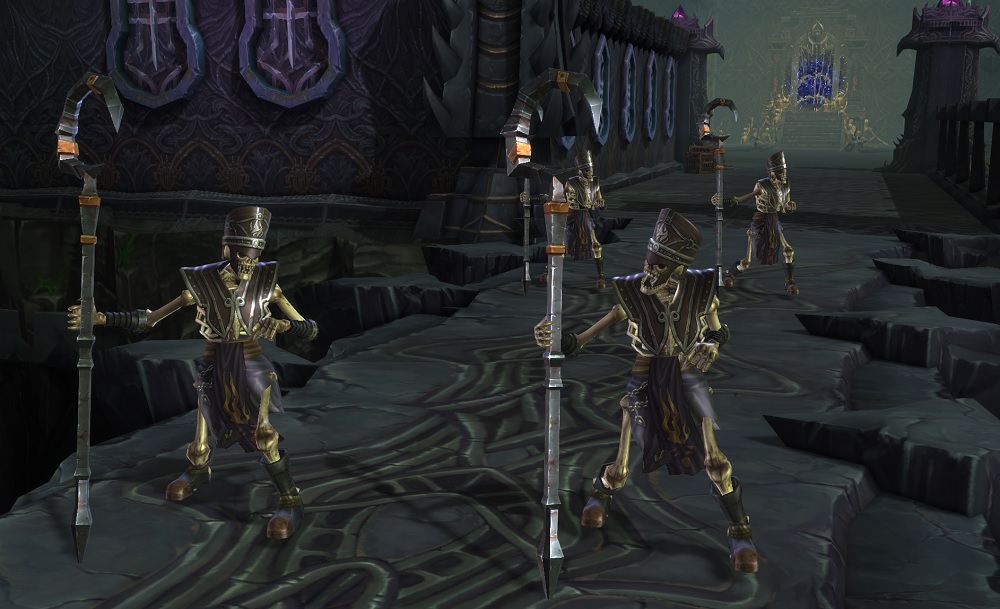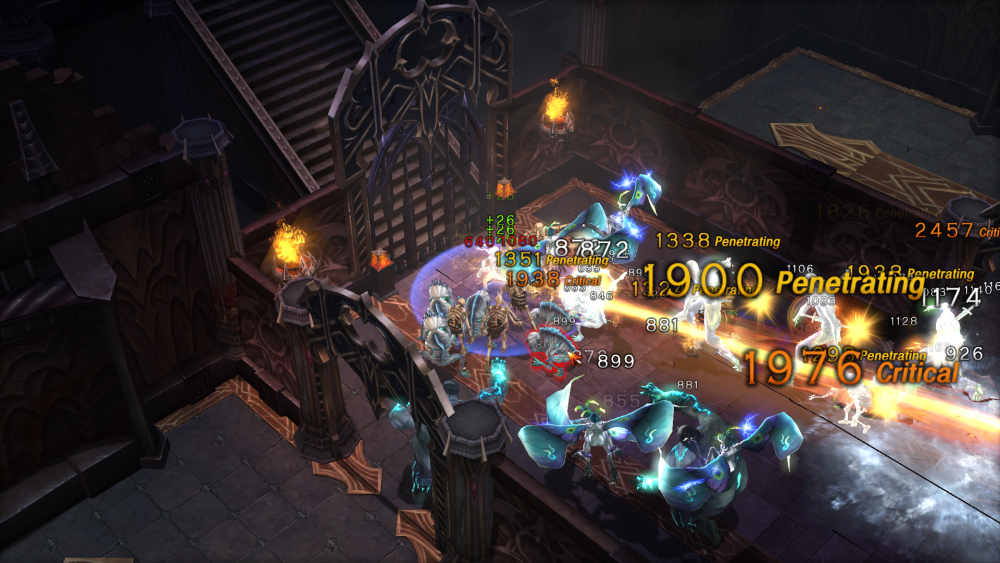When I play a game like Devilian, I feel sort of guilty about it. I like zoning out and slaying hordes of monsters in an action-role-playing game by just standing there, spamming the attack button. But sometimes I wonder if I couldn’t be playing something that’s more stimulating. The chase for better loot can seem like a treadmill that doesn’t help you lose weight. But these games engage the right parts of my brain, and I like seeing damage numbers get higher as I play. I can put on music or a podcast and relax as I watch numbers fly off my enemies.
At their best, these ARPGs make getting the loot the fun part, and the rewards act as evidence of the fun things you’ve achieved. But they rely on a strict work-for-reward cycle that keeps you engaged. If the work isn’t fun, the rewards are meaningless; if the rewards stink, the work feels unfair, even when it’s fun.
Devilian (out now for PC) doesn’t find the right balance. The work is only marginally fun and the rewards are mediocre. And without these elements working in tandem, it feels like a big waste of time.
What you’ll like
You can do a dungeon on your lunch break
Dungeons act as Devilian’s core. As you level up your character by doing quests, you’ll run into a few dungeons, usually to kill the boss monster inside. My first dungeon took me about 12 minutes, but I figured later dungeons would become more intricate (as they do in other ARPGs). But even as I approached the endgame (where players start going back through older dungeons on higher difficulties to grind for better gear), I never put more than 15 minutes into a dungeon, usually finishing them in less than ten minutes.
Check out our Reviews Vault for past game reviews.
Dungeons remain simple enough that you can focus on dealing damage, managing your potions, and moving forward to the next area without wandering around looking for the next objective. The doors and the keys you need to unlock them end up being in the same room most of the time. The 10 minute run-times can satiate the desire to see lifebars deplete without taking too long. And once you hit the endgame, you can hop in for at most an hour and make some decent progress on getting the next set of gear you want.
The microtransactions won’t bother you
You don’t have to ever pay a single dollar to play Devilian, which immediately makes it more accessible than a lot of its competition. Spending real money lets you earn more gold and experience, dress your character up in more silly outfits, and speed up some of the gear-hunting you’ll have to do in the later portions of the game. It uses the classic “money for time” trade, and while I don’t like the idea of paying for materials to get better gear, I don’t hate it either, and I never felt pressured to spend money on the game in all of my time playing it.
The streamlining
Devilian might not be as intricate as World of Warcraft or Diablo when it comes to crafting gear and grinding for loot drops, but it does a few smart things to ease new players in.
For one, you never have to pay to maintain your armor, which eliminates some the upkeep costs that can drain players of all their cash. The game also helps you find your footing when it comes to the endgame; every item you need to create or buy to get better armor or access harder dungeons tells you what you need to do to get it, whether it’s doing lower level dungeons or playing the competitive multiplayer. It also has matchmaking for every kind of activity in the game, which means you don’t have to dive into chat channels looking for people of your level to run dungeons with.
These minor improvements speed up the learning curve by pointing you in the right direction, which I wish more games like this did.
What you won’t like
The slog to the endgame
As I mentioned earlier, Devilian’s dungeons embody everything the game wants you to do; you get to see all your spells at work, your gear matters, and you can get some intense fights once you start ratcheting up the difficulty. But it takes way too long to get to a place where you can just focus on running dungeons.
In my initial impressions, I noted how it seemed structured more like World of Warcraft than Diablo, and that remains the case even after the level cap, which took me about a week of day-and-night sessions with the game to get to. Even after getting there, I’m still not convinced by the structure. Right now, getting to level 52 is an absolute slog, mired by the some of the most tedious quest design in massively multiplayer online games. You talk to a quest-giver, who provides a bit of context for the quest, go off and kill a certain number of monsters or interact with a certain object for however long, and then come back to the quest-giver for a reward.
I like killing waves of skeletons, fishmen, and demons and watching experience bars go up. I like filling up experience bars. But the structure all these quests follow breaks the trance of killing monsters over and over by making it all the more clear that you’re simply repeating the same set of actions for the same rewards ad nauseam.
Every MMO eventually ends up being most known for what they let you do after you’ve leveled up. But I continue to wonder why you even have to level up to get there in the first place. Several quests as a way to teach you how to play, but I don’t think it should take 60 hours to teach someone the ins and outs of a game like Devilian, and it doesn’t make a good case for why this structure continues to exist.
The loot cycle isn’t strong enough to keep you playing
To Devilian’s credit, it gives you a lot to do in its endgame. Once you’ve gotten to level 50 or so and have completed most of the quests, you can run each of the four final dungeons, run an Archdevil Dungeon (which requires powerful gear to enter), do a couple runs of the Abyssal tower (where you climb floor after floor of monsters in order to earn currency to buy armor), do quests in the Infinite Training grounds for the chance at item drops, or open rifts to fight powerful boss enemies in spontaneous events around the world.
But these activities are permutations of the same thing; corralling enemies and using the same combination of eight or so skills you learned near Devilian’s beginning. I’ve only ever felt like I couldn’t get away with standing around and spamming spells and healing potions the first time I tried a dungeon on the hardest difficulty I could. I had to keep an eye on what my enemy was doing for the first time, and I liked the challenge. Turns out I simply didn’t have good enough gear.
Usually, the gear itself would be what would entice you to keep running these same loops, but I haven’t found a piece of gear I really want to get, since the only difference among all the pieces of armor are numerical. Even worse, it can take tons of resources just to upgrade a single artifact (which you use to upgrade gear), and you can fail the enchantment process you use to make those artifacts stronger. So even when I had everything I needed to create a better item, I could end up back where I started, except without any of the materials I needed to try enchanting my artifacts again.
This might have been less egregious a few years ago, but when every Exotic gun in Destiny feels unique, when every new Legendary gem and item set in Diablo 3 grants your character new abilities, Devilian’s gear doesn’t have the same allure. And without that draw to make the grind worth it the spell games like Devilian can cast on dedicated players breaks completely.
It doesn’t give its story enough attention
Devilian keeps its story in the background, relegating it to quest dialogue; you can count the number of cutscenes on one hand. Early on, I read as much of the quest text as I could, but with the number of quests it contains, I quickly gave up. Some quests text pops up when you talk to a quest-giver. Sometimes you get a small notification letting you the quest you’re on has advanced to next stage, and you have click through to find out what your new quest actually entails. Some quests come out of nowhere, and happen entirely disconnected from any real story. And none of them really matter, because they all have you doing the same two or three things.
The writing behind some of the quests doesn’t help, either. One quest has you collecting bones from skeletons. After killing a few of them and completing the quest, the quest-giver will tell you she needs a specific kind of bone (hip) instead, starting another quest where you again have to kill skeletons for their bones. She then tells you to get yet another specific kind of bone (femur). You do this at least three times, doing the exact same thing under different contexts.
Devilian doesn’t do a great job of speaking through its world, either, and I think that’s a bigger crime here; I skipped most of the dialogue in Diablo III and still got a good sense of what I was doing. I never got that from Devilian, and it made the grind to its endgame far less interesting than it would have been otherwise.
The typical fantasy aesthetic
I haven’t seen gear quite like the dresses and high heels of the Cannoneer before, and while most of what they wear doesn’t seem the least bit combat-ready, I appreciated that it wasn’t the typical combat gear you see in other MMOs and action games.
Beyond that, however, you could easily mistake Devilian for just about any other fantasy game out there. The other classes in the game have gear typical of the fantasy archetypes; the Berserker wears a lot of heavy armor; all the Shadowhunters I encountered looked like a combination of Alucard from Castlevania: Symphony of the Night and Vincent from Final Fantasy VII.
The Evoker wears a lot of robes, and showcases Devilian’s cringe-worthy approach to women. The breast physics are absurd, and whenever you approach someone with breasts for a quest, expect them to bounce around like saloon doors made of gelatin. It’s not just the physics, either; in the game’s first dungeon, Elara (the person who guides you through the first few moments of the game) gets captured by a demon. When you finally find her in dungeon minutes later, the camera lingers on her just long enough for her to writhe in pain, her breasts to scuttle around beneath her dress.
Devilian’s aesthetic is as bland as it is gross, and aside from some neat and colorful spell effects, it doesn’t do much to draw you in.
The competitive multiplayer is a dud
One of the reasons I wanted to play Devilian to begin with was its competitive multiplayer, which at first glance looked like a simplified version of online battle arenas like League of Legends or Heroes of the Storm. But it’s too simple to take seriously, too clumsy to enjoy for what it is, and not consistent enough to invest in.
The multiplayer takes place on one of two maps: an enormous 20-versus-20 map, and small 3-versus-3 arena. The larger map has you running among capture points, though you can snare a few towers that you let you see parts of the map or kill a monster that grants a few more points towards the goal. The smaller maps works more like your average deathmatch.
Both modes seem exceptionally unbalanced right now, and I’ve caught many conversations between players about the strength of the Evoker class. I think a larger problem, however, is the movement doesn’t feel tuned to fast, reactive skirmishes; attacks and spells lack precision, which means it’s nearly impossible to escape an ambush. And since almost every spell’s area of effect deals damage to groups rather than single targets, you’re often dead the moment someone (especially an Evoker) throws the first spell. The smaller, 3-on-3 map works a bit better since it’s less chaotic, but it still suffers from these same issues. In a game with several other ways to spend your time, this one feels like the biggest waste of it.
And so is the Devilian form
Every class has two forms: a regular form you use throughout most of the game, and a Devillain you can activate after you’ve filled a meter. It looks kind of cool, as the character’s look changes dramatically (the Cannoneer, who carries large gun around with her, gets it infused into her arm, for example). In all the hours I spent playing, I activated my Devilian once, just to test it out, and it had the opposite effect of what I expected: Rather than feeling like I could kill anything, I felt confused and weak.
The Devilian form comes with its own set of gear and experience points, which you have to go out of your way to get. You have a different set of skills, and certain areas of the game require you to use it. But I never once felt like I needed to use it, or bother to learn the form’s intricacies. I just didn’t see the point, and I forgot I had it until I entered an area where I was forced to use it.
Conclusion
The constant pull to repeat a set of activities to see numbers go up permeates every game like Devilian. Even now, I’m thinking about running a few more dungeons and seeing if I can’t get some Heroic gear out of it. But almost any game with loot will make you want more of it, so hitting that part of the brain’s reward center isn’t enough to make for a good game.
Devilian could evolve into something great, eventually; none of the games I’ve compared it to started out as good as they are now. But until it makes its classes more interesting and diverse, engages me with more meaningful rewards, and makes its world more fun to explore, I don’t see why I’d choose it over any other outlet for my loot lust.
Score: 50/100
Devilian is available now for PC and is free to play. The publisher provided GamesBeat with codes for temporary Patron Status for this review. Patron Status grants bonus experience, access to additional character and inventory slots, some cosmetic items, the ability to post announcements in chat, and a few other minor bonuses.
VentureBeat's mission is to be a digital town square for technical decision-makers to gain knowledge about transformative enterprise technology and transact. Learn More

